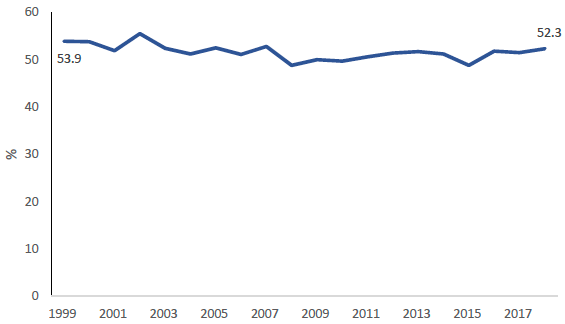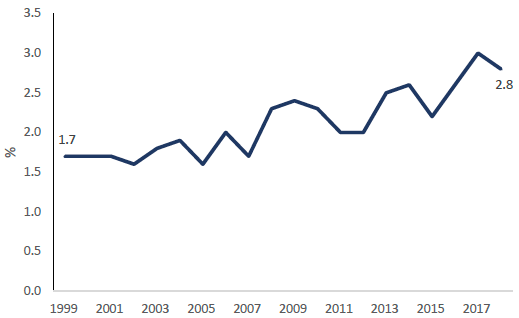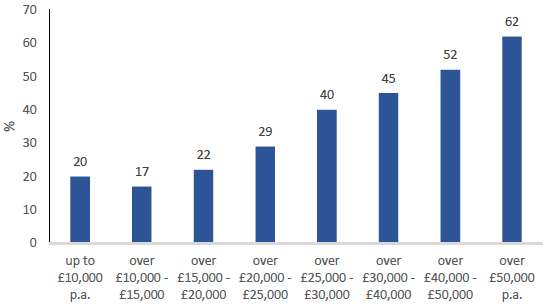7. Walking and Cycling
Transport and Travel in Scotland Results from the Scottish Household Survey
7. Walking and Cycling
Walking
Of all journeys reported in the SHS travel diary, 20 per cent had walking as the main mode, a decrease from 26% in 2012. [Table Sum 1 and Figure 36]
Figure 36: Percentage of journeys with walking as the main mode, 2012-2017

Twelve per cent of adults usually walked to work. There has been a slight downward trend since 1999, when the figure was 14% [Tables 7, TD2 & SUM1, and Figure 37].
Figure 37: Percentage of adults walking to work, 1999-2018

Fifty two per cent of children usually walked to school as their main mode of transport, this is similar to the 1999 figure of 54% [Tables 15, TD2 & SUM1 and Figure 38].
Figure 38: Percentage of children walking to school, 1999-2018

The average (median) walking journey was 1.0 km using road network distance. [Table TD5a]
Cycling
Of all journeys reported in the SHS travel diary, 1.4% were by bicycle. This is similar to the proportion in 2012 of 1.2% [Table 1 & Sum 1 and Figure 39].
Figure 39: Percentage of journeys with cycling as the main mode, 2012-2018

2.8 per cent of adults usually cycle to work. There has been an upward trend in since 1999, when the figure was 1.7% [Figure 40].
Figure 40: Percentage of adults who cycled as their usual method of travel to work, 1999-2018

1.9% of children cycled to school. There has been an upward trend since 1999, when the figure was 0.7%. [Tables 15, SUM1, and Figure 41]
Figure 41: Percentage of children who cycled as their usual method of travel to school, 1999-2018

The average (median) cycling journey was 2.8 km using road network distance. [Table TD5a]
Bicycle access
Just over a third (35%) of households had access to at least one bicycle for adult use in 2018. Nineteen per cent had access to two or more. [Table 18]
Household access to bikes increased with household income and household size; 60% of households with an income of £40,000 or more have access to one or more bikes, compared to 16% of households with an income up to £10,000. Bicycle access was higher in rural areas than urban areas. [Table 18 and Figure 42]
Figure 42: Access to one or more bicycles in household, by income, 2018
